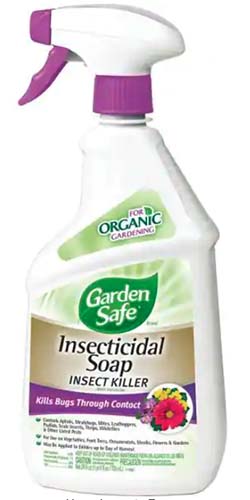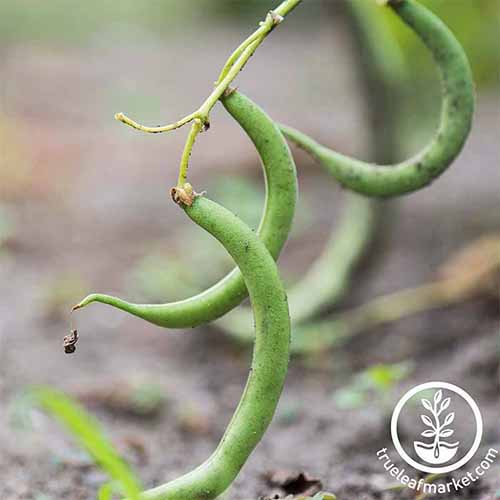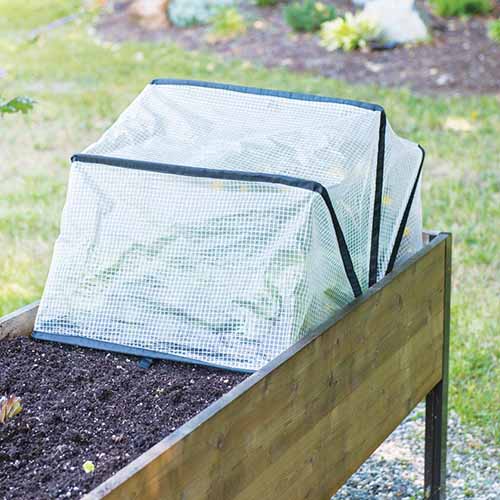How to Control Beetles on Green Bean Plants
There is nothing worse when you are growing yummy, vibrant green beans to find them suddenly infested by pests.
While there are many insects that can decimate legumes, beetles are some of the worst.


We link to vendors to help you find relevant products. If you buy from one of our links, we may earn a commission.
Bean leaf beetles, Mexican bean beetles, and cucumber beetles are the most common culprits. Thankfully, there are effective organic methods available to keep these pests at bay.
Common solutions include physical controls like row covers and organic pesticides like neem oil.
Regardless of what is attacking your plants, actively keeping an eye on your garden is a great habit to get into, so you will notice pests through regular monitoring before infestations have time to grow out of control.
Unfortunately, it isn’t always easy to notice the presence of certain types of bugs until after they have caused significant damage.
In this guide, we’ll take a closer look at the most common pests and discuss the best methods for keeping them under control.
What You’ll Learn
What Kind of Beetles Attack Green Beans?
Many kinds of pests may attack green beans, but bean leaf, Mexican bean, and cucumber beetles are the most prevalent in home gardens.
Oriental beetles will also attack string beans, but the damage is not as significant or as common as that caused by other insects mentioned in this guide.
In general, these bugs feed on the underside of the leaves. They can damage the pods, but typically prefer to munch on the foliage. Many kinds of larvae will also damage the roots and stems, which can put a strain on your plants.
How to Identify Beetle Damage
When you suspect bugs are attacking your plants, the first thing you should do is look at the foliage.
If you can’t see anything on top of the leaves or near the veins, check the undersides. Most beetles feed from underneath the foliage, and this makes them harder to detect.
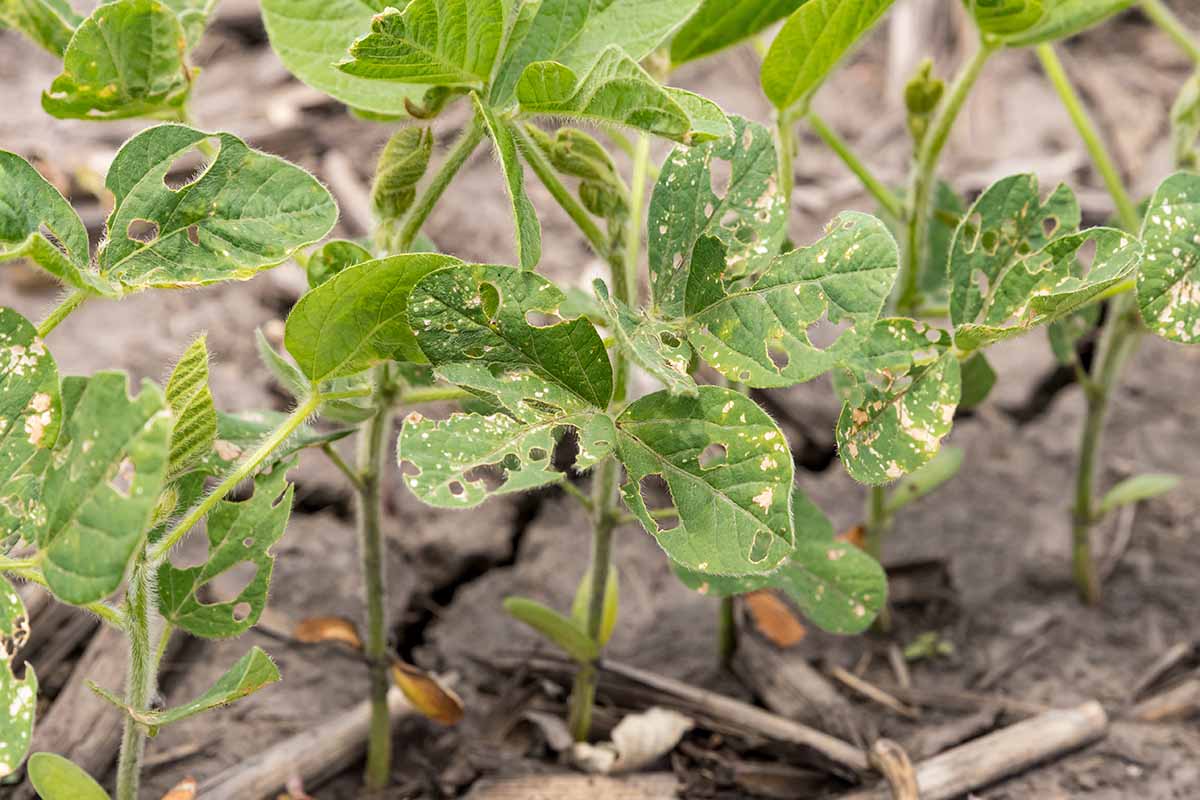

You should also check around the base of your plants for stem damage caused by larvae.
Grubs can unfortunately be hard to detect, particularly if they are causing damage to the roots underground, but it doesn’t hurt to give your plants a thorough examination – short of digging them up, unless this proves to be necessary.
The best time to look over plants is in the morning, when the bugs will still be present but not particularly active. In addition, the morning is also the best time to water so you can do both things at the same time.
Also be sure to take a look at the other plants that are growing around your garden. It’s not just the green beans that may suffer pest damage!
And it’s also possible that any pests that are present may have had their fill of one plant before moving on to another. Regular monitoring of the garden for signs of infestation and disease is an important element of integrated pest management.
If you can’t find the culprit right away, examine any damage that you’ve found more closely. What does it look like? Are the damaged areas large or small? Are they concentrated in a single area, or spread out?
How does this help with identification? Different types of pests have different habits.
Mexican bean beetles feed heavily, for example, which can result in the leaves that look skeletonized, or lacy. In contrast, bean leaf beetles prefer to feed sporadically in different spots.
Let’s discuss the most common types of beetles that you’re likely to encounter in a bit more detail next, as well as effective organic control methods that you can employ at home.
Bean Leaf Beetles
Small holes found all over the foliage are a sign that bean leaf beetles might be the problem.
Cerotoma trifurcata are especially common in areas where soybeans are farmed, and they’re most commonly found on string beans, soybeans, and clover. They may also occasionally be found on cucumbers and squash.
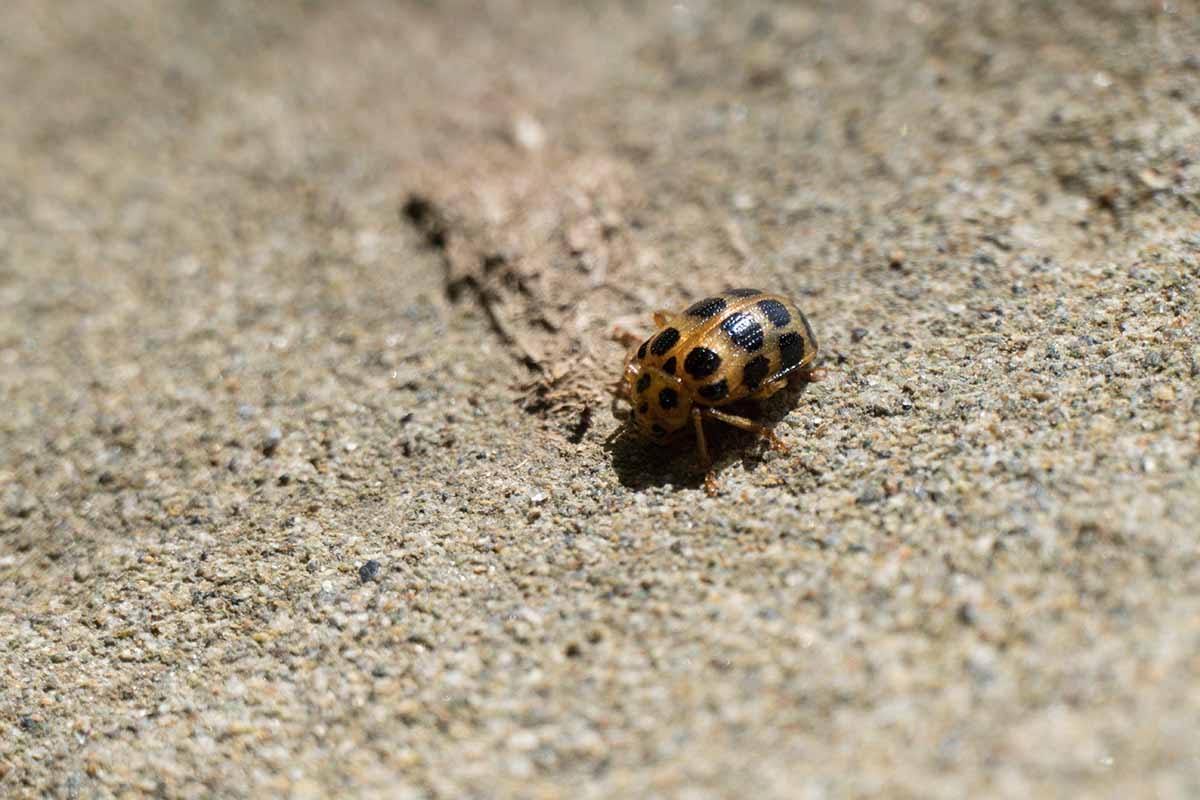

Their color ranges from yellow to red and they often have black spots, but they may be a solid color as well.
The spotted insects look somewhat like ladybugs, although their bodies are more elongated. Also like ladybugs, this insect’s head is typically black or brown.
The primary identifier of C. trifurcata to distinguish it from these beneficial insects is a black triangle at the base of the head or in the “neck” area.
Bean leaf beetles overwinter under plant debris and emerge for the first time in mid-spring to early summer. In warm climates, like that of Kansas, they can cycle through three generations a year. In colder areas, like Wisconsin and Canada, they may only complete one or two generations.
They are known for chewing small holes all over the leaves but will occasionally attack the pods and roots. Root damage is primarily done by larvae since the bugs lay their eggs in the soil near the plants.
These pests can also carry and spread bean pod mottle virus. The primary symptoms of mottle virus are yellow blotches on the leaves, and discolored seed coats.
If you suspect an infestation, check the undersides of foliage. These pests can be hard to detect since they like to hide out and feed underneath the leaves.
Organic Control Methods
Floating row covers or cloches are good physical control options to keep these insects off your plants. You can also pick them off by hand, but they can be fast and difficult to catch.
The primary cultural control for combating C. trifurcata is to plant your crop later in the season to minimize damage. Unfortunately, this might not be an option in areas with a short growing season.
This is especially important in areas where soybeans are grown commercially, like certain parts of Illinois. A higher concentration of the pests are typically found in areas where food for the bugs is plentiful.
Organic pesticides that fight C. trifurcata include rotenone, pyrethrum, and neem oil. Neem oil, which is extracted from the seeds of the neem tree, is a particularly common solution for organic gardeners.
Neem oil must be diluted before use, so carefully follow the instructions on whatever product you choose, or look for one that’s labeled as ready to spray.
Larvae can also be controlled by applying an insecticidal soap like this one from Garden Safe that’s available via Home Depot.
Mexican Bean Beetles
If the leaves of your plants are looking almost skeletal, the Mexican bean beetle might be to blame.
Epilachna varivestis adults are coppery red with dark spots. They are particularly sneaky since their short, round body shape looks similar to that of a ladybug – again!
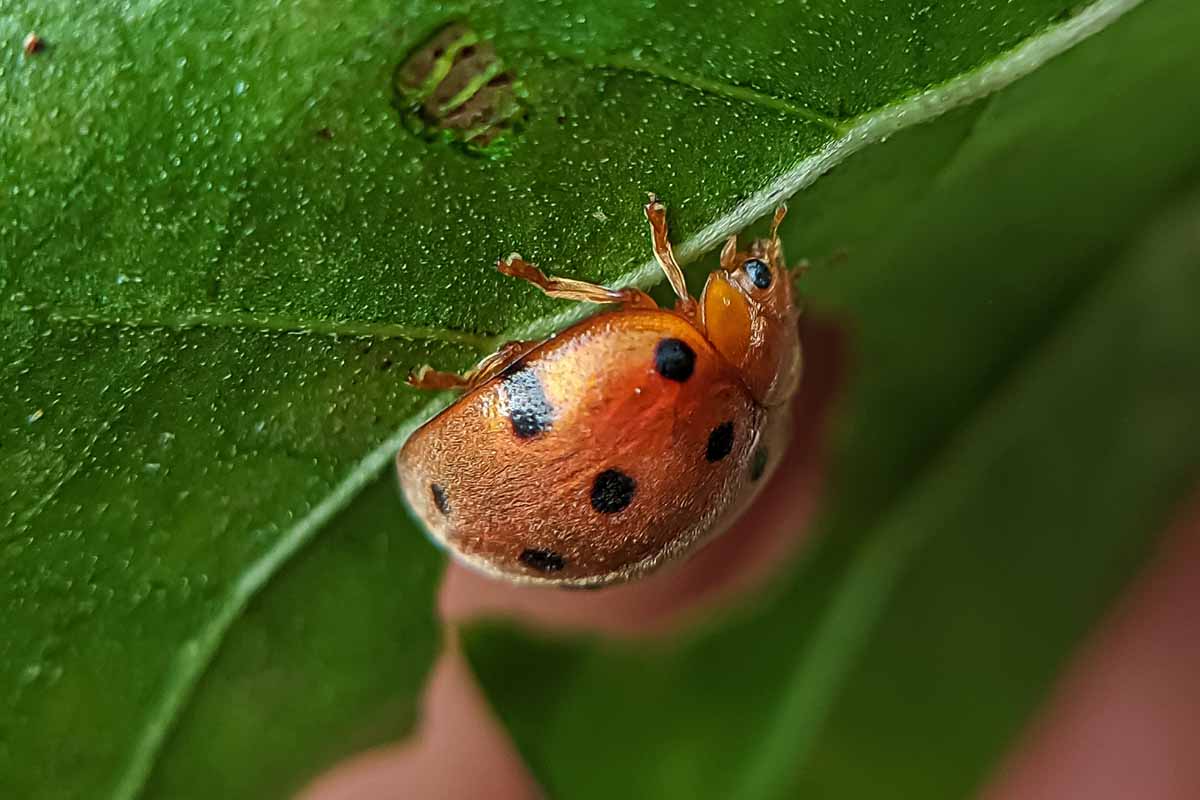

And this is especially annoying since ladybugs are beneficial insects that eat aphids, another common pest that often attacks garden vegetables like legumes, whereas these insects are pests.
While they come in a variety of colors, their heads are the same color as their bodies. In contrast, ladybugs have black heads.
E. varivestis feed on the undersides of leaves and live the majority of their lives on bean plants, including in their yellow egg stage.
Their larval stage is particularly unique since the larvae are bright yellow with branching spines. The adult insects are strong fliers, and they can fly long distances to find new sources of food.
We have a detailed guide to Mexican bean beetles. (coming soon!)
Organic Control Methods
Early-maturing cultivars can withstand Mexican bean beetle infestations best, as the majority of the damage is done in late summer.
You can plant varieties like ‘Wade’ and ‘Black Valentine’ that are less susceptible E. varivestis damage.
‘Black Valentine’ seeds are available from True Leaf Market.
Early in the season, you can also release beneficial predators like ladybugs, lacewings, or parasitic wasps. Pediobius foveolatus is a small wasp worth noting that attacks E. varivestis as well as squash bugs.
To prevent the buildup of pest populations, destroy or compost plants immediately after harvest. This eliminates areas where adults may overwinter.
Cucumber Beetles
Despite their name, cucumber beetles will also attack legumes on occasion.
Spotted cucumber beetles, or Diabrotica undecimpunctata, are annoying pests that, like the other insects in this guide, look somewhat similar to ladybugs.
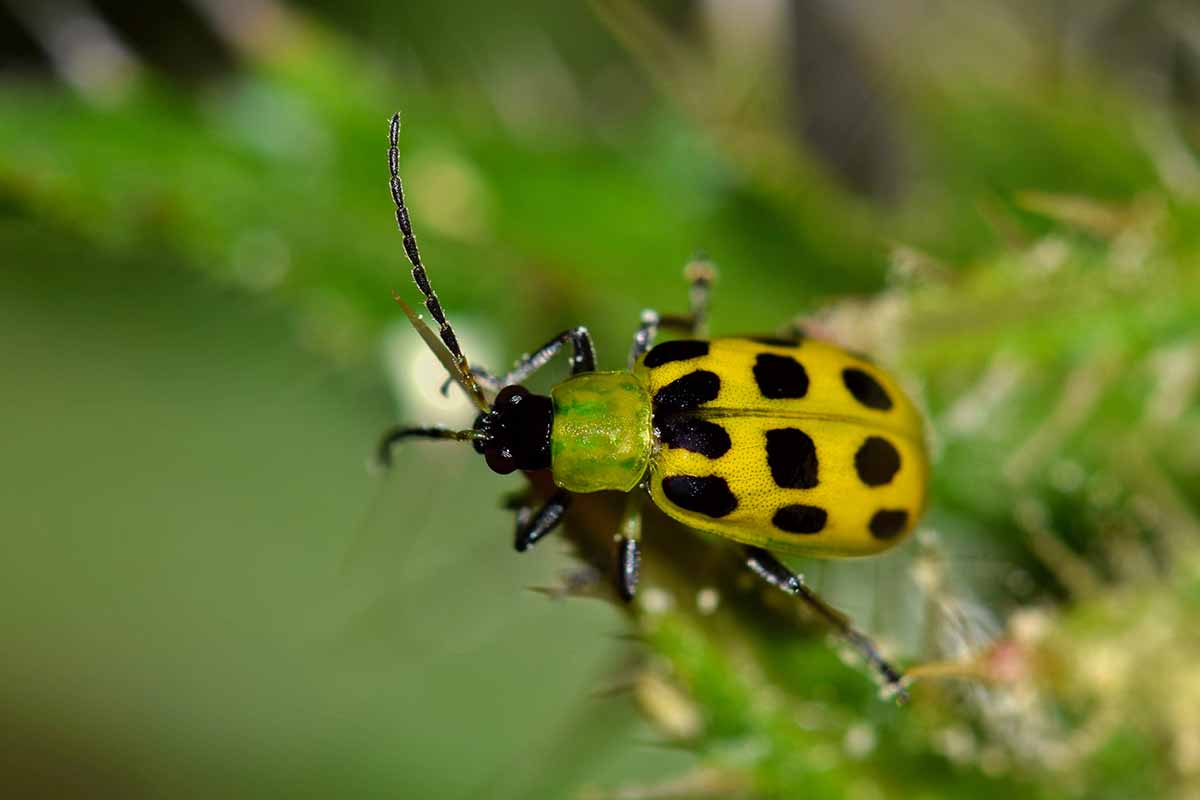

Yellow-green or sometimes slightly red with black spots on their backs, they also have black heads and antennae.
While striped cucumber beetles may also make an appearance in the garden, the spotted variety is seen more often on legumes.
The larvae are white and worm-like, and they can attack the roots of grass, legumes, and corn.
We have a detailed guide about cucumber beetles and how to fight them. (coming soon!)
Organic Control Methods
The best organic control for this pest is to be proactive and try to catch an infestation before it gets out of hand.
Check your plants often for signs of pests and pick any offenders off manually. The best time to hand pick them is early in the morning, since the bugs are fast and can be more difficult to catch at other times of the day.
D. undecimpunctata infestations are particularly dangerous when the plants are young.
Since they have tender roots and should be sown directly in the garden, you can use a clear plastic cover like this garden cloche and humidity dome that’s available from Amazon for added protection.
These small covers are good for keeping bugs at bay while the plants are very young. However, the domes need to be removed soon after germination to prevent heat damage. Keeping the plants covered for too long can effectively cook them.
Floating row covers can also help to keep the bugs away. Try something like this Pop-Up Crop Protector from Gardener’s Supply Company if you’re looking for a solution that’s easy to install and you only need to protect a small space.
If you use a cover, be mindful of the wind. If you live in a windy area, make sure you secure the cover carefully so it doesn’t blow away or damage your plants.
Be cautious when using greenhouses and other covers that don’t allow good airflow, especially in warm seasons. While they are a good option for protecting young plants or extending your growing season, they can retain too much heat.
The best organic pesticides for fighting cucumber beetles are pyrethrum, spinosad, and neem.
Other Pests That May Infest Green Beans
Aside from beetles, many other types of pests will attack your crop.
Aphids are possibly the most notorious pest that attacks legumes. They blend in, but a close look under the leaves can tell you whether or not they are the cause of your problem.
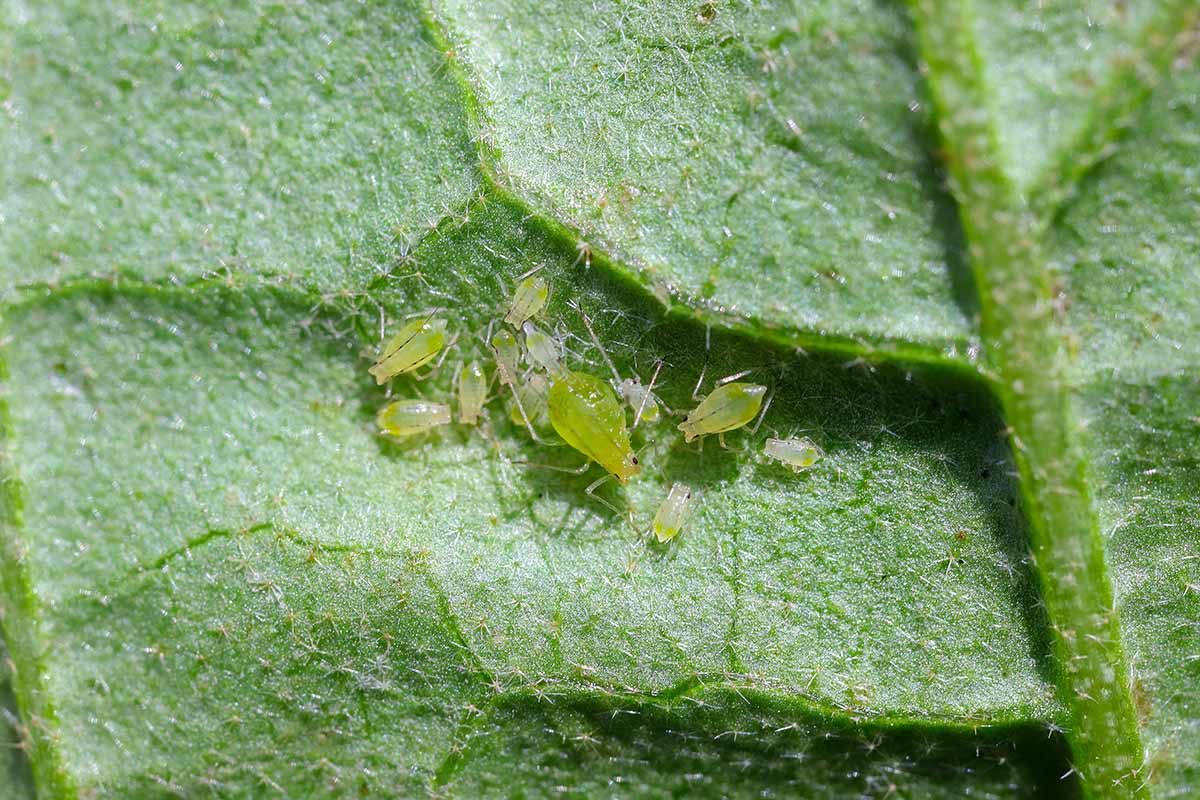

Aphids can easily be fought by mixing a tablespoon of dish soap (I use Dawn) with one quart of water and spraying it on the plants. Be sure to get the stems and undersides of the foliage. Alternatively, you can use insecticidal soap.
Other pests that you may encounter include slugs, caterpillars, and vegetable leaf miners.
Regardless of which pests you are fighting or the particular infestations that you are trying to prevent, start with good gardening practices like conducting soil tests as needed, and rotating crops.
Putting the same kind of plant in one area year after year not only depletes the soil of nutrients, it also provides pests with a reliable source of food. By rotating what you grow and amending the soil, you give your garden a better chance to thrive.
Another general control for dealing with pests involves using floating row covers, as mentioned above. Since beans are self-pollinating, you can grow them under cover until it is nearly time to harvest.
Battle Beetles on Beans
The primary weapons in your fight against these pests are vigilance and physical protection.
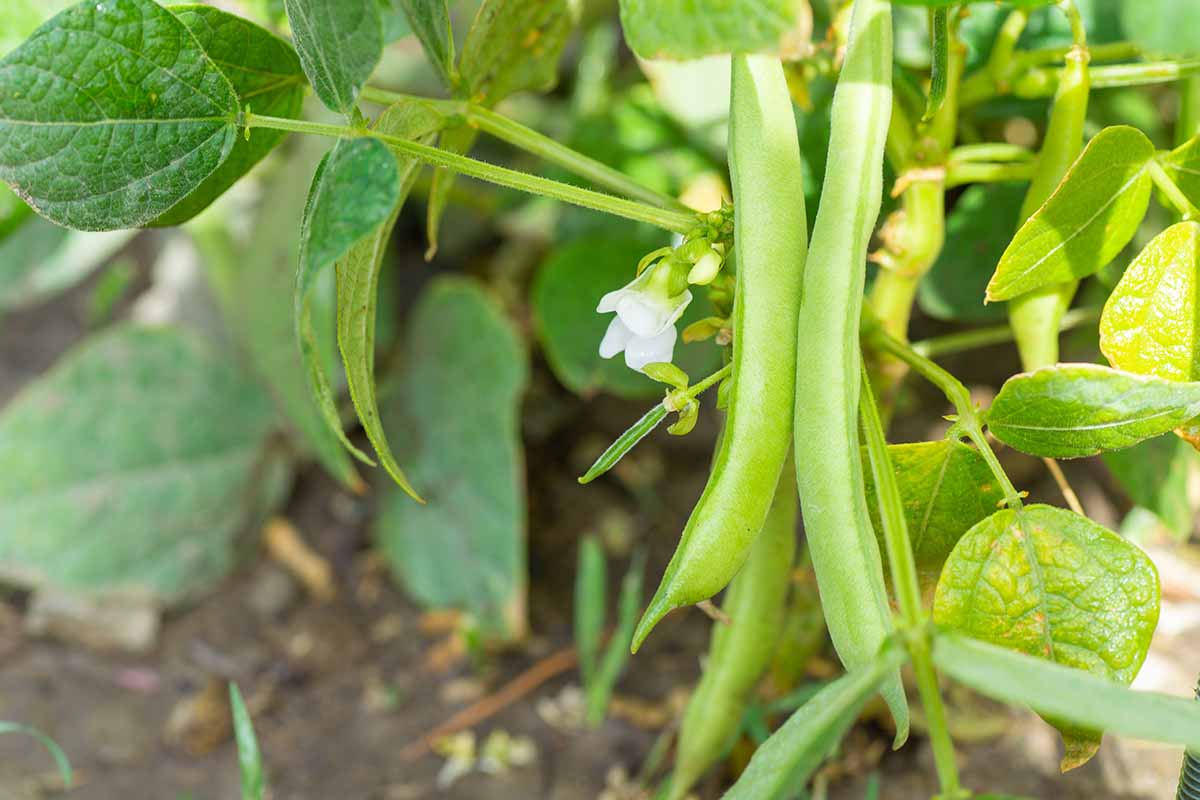

Despite the unwanted visitors who may wish to make a meal of them, green beans are some of my favorite vegetables to grow and they’re great for beginners.
In fact, they are perfect for teaching kids to garden since the seeds are large and the plants grow quickly.
Have you dealt with any of these pests? Share your experience with us in the comments section below.
If you want to learn more about taking care of green beans, check out these guides next:

